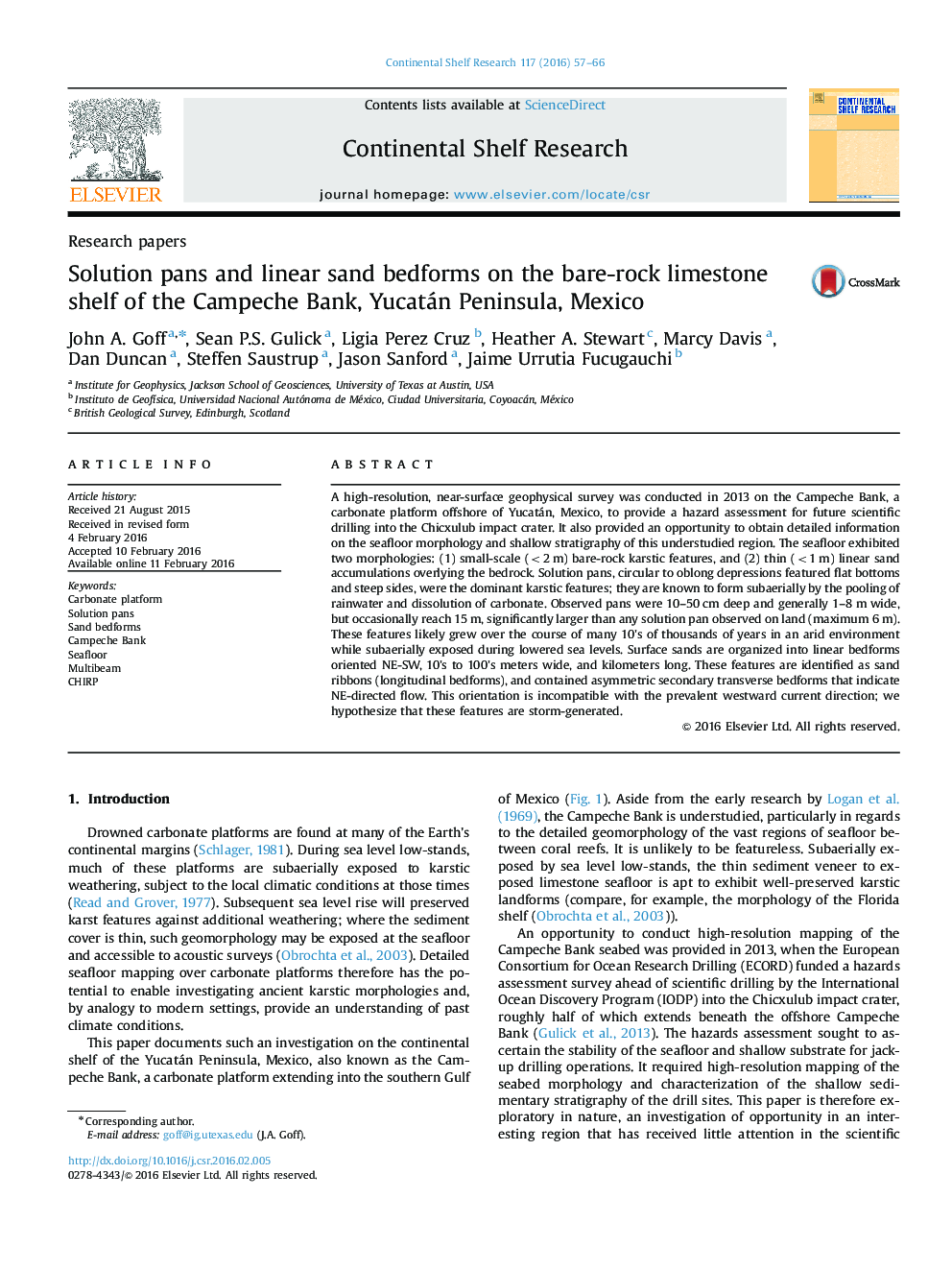| Article ID | Journal | Published Year | Pages | File Type |
|---|---|---|---|---|
| 6382945 | Continental Shelf Research | 2016 | 10 Pages |
Abstract
A high-resolution, near-surface geophysical survey was conducted in 2013 on the Campeche Bank, a carbonate platform offshore of Yucatán, Mexico, to provide a hazard assessment for future scientific drilling into the Chicxulub impact crater. It also provided an opportunity to obtain detailed information on the seafloor morphology and shallow stratigraphy of this understudied region. The seafloor exhibited two morphologies: (1) small-scale (<2Â m) bare-rock karstic features, and (2) thin (<1Â m) linear sand accumulations overlying the bedrock. Solution pans, circular to oblong depressions featured flat bottoms and steep sides, were the dominant karstic features; they are known to form subaerially by the pooling of rainwater and dissolution of carbonate. Observed pans were 10-50Â cm deep and generally 1-8Â m wide, but occasionally reach 15Â m, significantly larger than any solution pan observed on land (maximum 6Â m). These features likely grew over the course of many 10's of thousands of years in an arid environment while subaerially exposed during lowered sea levels. Surface sands are organized into linear bedforms oriented NE-SW, 10's to 100's meters wide, and kilometers long. These features are identified as sand ribbons (longitudinal bedforms), and contained asymmetric secondary transverse bedforms that indicate NE-directed flow. This orientation is incompatible with the prevalent westward current direction; we hypothesize that these features are storm-generated.
Related Topics
Physical Sciences and Engineering
Earth and Planetary Sciences
Geology
Authors
John A. Goff, Sean P.S. Gulick, Ligia Perez Cruz, Heather A. Stewart, Marcy Davis, Dan Duncan, Steffen Saustrup, Jason Sanford, Jaime Urrutia Fucugauchi,
